Products You May Like
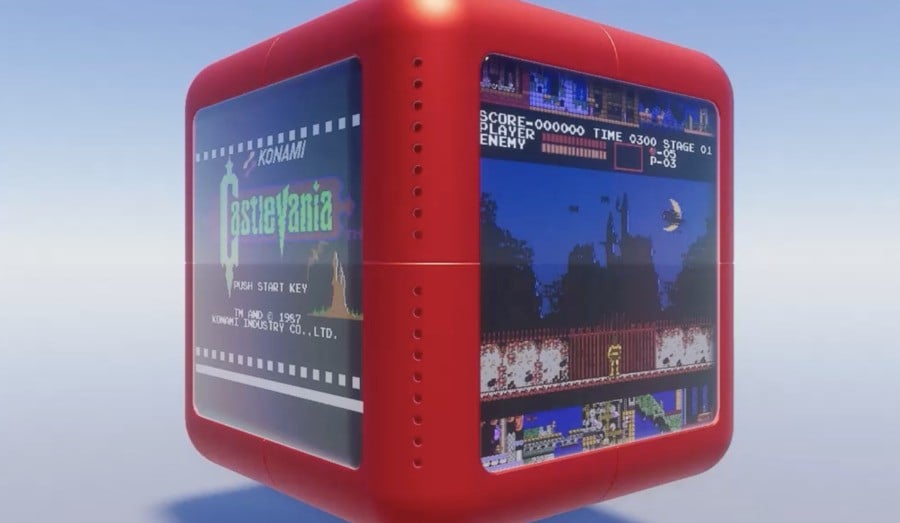
If there’s a topic that’s led to consistent debate and occasional toxicity in online gaming discourse over the past few months, it’s NFTs. Non-fungible tokens aren’t actually particularly new to early adopters of blockchain technologies, but 2021 was the year when they broke into mainstream media and conversations around arts and entertainment. From fine art auctions to in-game cosmetics, NFTs became a hot topic in conversations also focused on blockchain technology and ties to cryptocurrencies.
You don’t need to look far online to find passionate arguments for and against NFTs, though such is the fervour of the debate that at times it can feel like facts and realities get set aside. For example, arguments against often cite environmental factors and cryptocurrency issues, which aren’t necessarily applicable to all NFTs. On the other side, some defending the concept blithely disregard all genuine issues. Overall, it’s rarely a civil or calm debate.
We want to try and separate fact from fiction, while sharing the views of industry figures with active interests — positive and negative — when it comes to the increasing trend of NFTs in gaming.
We spoke to former game journalist (and Pure Xbox editor) Kenneth Barnes, who now runs a web platform related to blockchain technologies. We also spoke to Michael Yum, founder and CEO of PM Studios with extensive business experience in blockchain technology. Finally we got the views of Tim Dawson from Witch Beam Games (Assault Android Cactus, Unpacking), who is vocally against NFTs in gaming. The contributions from all three have been hugely useful and, importantly, balanced and eloquent. This writer is also generally against the idea, but the goal of this article is to give both perspectives a fair hearing while sticking to facts.
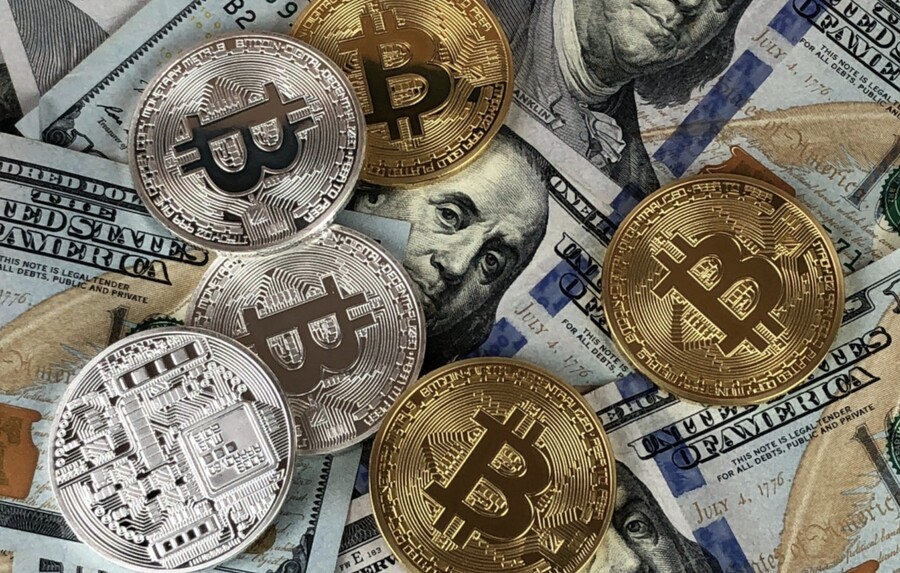
First, A Quick Overview of NFTs
What’s an NFT and a blockchain again?
Non-fungible tokens are digital assets that are stored in the blockchain; more accurately, if you purchase an NFT you buy a unique token that is then stored on a blockchain. A ‘blockchain’ is best considered as a shared online ‘ledger’ maintained across multiple computers on a shared network.
A ‘blockchain’ is best considered as a shared online ‘ledger’ maintained across multiple computers on a shared network
The concepts aren’t new, to be clear, but the evolution of cryptocurrencies in particular — such as Bitcoin and Ethereum’s ‘Ether’ and a host of smaller alternatives — has transformed awareness and usage.
NFTs are often traded in cryptocurrencies, which is where some of the debate can be confused and lose context, but in early cases within gaming, consumers earn NFTs through gameplay — or perhaps in future will be able to use ‘real’ money or a game’s virtual currency to make the purchase — with the host platform (like Ubisoft with Quartz) then partnering with Blockchain platforms that operate with cryptocurrencies (we’ll come back to Ubisoft’s initiative later).
Back to the NFTs. If you buy one, you own a token (like a receipt) for that asset, whether it’s artwork, an in-game cosmetic, etc. Part of the debate is whether that ownership actually matters, as the nature of the internet makes it a wild west of image sharing and downloading, so you may own an NFT for an image while millions download an identical JPEG. Nevertheless, there has been a boom in the last 12-24 months of image owners — notably people in pictures that became ‘memes’ — making huge sales in cryptocurrencies for an NFT token of that image.
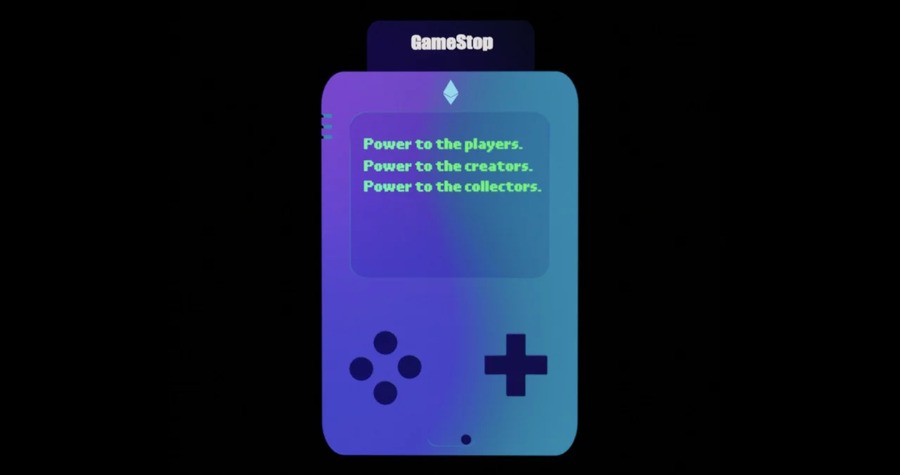
To advocates, NFTs give image rights and ownership back to creators, allowing them to make money from their work. There’s also the argument that if you own a digital item as an NFT you can then re-sell, trade or give to others, a perspective that we’ll come back to in the discussion of NFTs in games.
To critics, it’s irrelevant as the item being sold is virtual and arguably unenforceable, making it ‘worthless’. The argument can be that it’s a cryptocurrency-driven artificial boom / bubble that won’t ever truly reach the mainstream. The truth may, unexcitingly, be somewhere in the middle.
But Aren’t NFTs Bad For The Environment, Open To Fraud and So On?
The short answer is the technology of which NFTs are a part can undoubtedly be power-hungry and environmentally damaging. The most known types of cryptocurrencies like Bitcoin, in particular, are significantly energy hungry as a result of ‘mining’ requiring high powered PCs to be running over long periods of time. You’ve likely read about Bitcoin ‘farms’, which are controversial for the sheer scale of power they demand; they were even ‘banned’ in China, driving these businesses to other countries.
However, some areas of blockchain technology are moving to a potentially better solution; Michael Yum explains that gaming’s environmental impact is ultimately more fundamental than just the potential growth of NFTs:
Truthfully all network based games whether its blockchain or not have a huge environmental impact. When you interact on the internet, you are consuming energy. Its plain and simple. However, ‘proof of stake’ does reduce the energy consumption because it requires less data transaction points and it is a very big step forward from what is currently happening with Ethereum and ‘proof of work’.
To clarify the difference between ‘proof of stake’ and ‘proof of work’, we turn to Ken Barnes. There’s no doubt that the former, which is being adopted in some products including Ubisoft Quartz, is far less power hungry.
The environmental impact is a huge concern for proof of work chains such as Bitcoin and Ethereum. Proof of stake uses many magnitudes less energy, mainly due to there being no mining requirement.
The problem is that when people hear the words “blockchain”, “cryptocurrency”, or “NFT”, they instantly think of Bitcoin, immorally expensive NFTs that look like finger paintings being sold on Ethereum, or people lining up to buy 40 graphics cards that they’ll then have hooked up and running 24/7 to try to mine them a few bucks. Understandably so, given those things have seen more coverage than any other coins, tokens, or chains.
However, proof of stake chains – such as Cardano, Tezos (which Ubisoft is using), Stellar, Algorand, and many more – don’t have a mining component. Rather than being mined, new coins are generated by the network and periodically sent to users who “stake” their coins, almost in the same way that your bank pays you interest on your savings. That means a lot less energy is used. In terms of NFTs, it’s estimated that creating a single NFT on Ethereum takes 1.5million times as much energy as it would on Tezos. Therefore, the environmental impact is much, much less pronounced on proof of stake chains, to the point that Tezos estimates that their entire blockchain uses 0.0000006TWh of electricity annually, as opposed to Bitcoin’s 130TWh and Ethereum’s 26TWh. [Reference]
This doesn’t entirely wash with Tim Dawson, however, as he sees the lower power consumption of proof of stake as hiding other fundamental issues.
Proof of stake is cited as a fix but has major drawbacks as well – it’s less energy consuming than proof of work but has its own energy scaling issues, it’s less secure and centers power with the wealthy (less democratic) and perhaps the most damning part is that despite the issues being widely known and this solution being widely touted, major cryptocurrencies aren’t using it and haven’t made any attempts to migrate to it.
Ethereum, a prominent major blockchain with its currency Ether being second only to Bitcoin in value, is aiming to shift to proof of stake this year, but it hasn’t completed the process as yet. As Dawson alludes to, it’s not a perfect solution in any case, and as blockchain and its related products / technologies are decentralised and unregulated, it’s not hard to find cases of users being scammed regardless of the cryptocurrencies, NFTs or platforms.
Even those with direct experience in the industry recognise the issue. Ken Barnes fairly suggests that as the markets mature issues can be tackled, highlighting some technical solutions to manage volatility. Michael Yum, for his part, emphasizes that stability is key to deal with nature of the technology.
Sadly this is one of the biggest concerns with NFTs and Cryptocurrencies. Due to its decentralized nature, the volatility is very unstable because the pricing and data ownership cannot be controlled by the developer. I do think this is a very big issue and there are no solid solutions. I believe there will be some sort of stability offered with stable coins in the near future.
Tim Dawson sees the dangers of scams as a major issue with blockchain technology increasigly moving into the gaming space.
For me, the biggest negatives of NFTs and blockchain technology is their association with scams, “rug pulls” and pyramid schemes. The crypto community has demonstrated it’s more interested in profit than providing any useful service or improvements and to see this mindset turned towards video games makes me fearful that my peers, both gamers and developers, will be taken advantage of.
In terms of the laws around cryptocurrencies in particular, the technology is new enough that many governments simply haven’t figured out strategies. They’re decentralised and not currencies tied to nations, so therefore aren’t taxed; how long that state of affairs continues in its current form is anyone’s guess.
I Sort Of Understand, But I’m Confused
Yep, that’s pretty normal, hopefully this information helps a little, but it is undoubtedly complex.

Right, So What’s Happening With NFTs in Games then?
This is where our interviews were most educational, and two key approaches were highlighted to us.
Microtransactions / DLC
This is currently the most high-profile scenario courtesy of Ubisoft and its Quartz programme. It offers ‘digits’, which is just branding for NFTs, that take the form of cosmetics in Ghost Recon: Breakpoint for PC. These NFTs weren’t directly sold to players initially, but distributed on a first-come-first-served basis if you claimed them or met certain in-game requirements, such as playing for a minimum number of hours (it varied depending on the item). The initiative is partnered with Tezos, a platform with its own cryptocurrency (XTZ); transactions seem to be taking place with the Tezos cryptocurrency, so anyone that sells a Quartz Digit will need to navigate the Tezos ‘wallet’ system and follow multi-step processes if they want to convert the sale into a conventional currency like US dollars.
Ubisoft won’t be the last to tie what were previously microtransactions into limited edition NFTs, we’re likely to see more companies attempt the model. What it does allow, for those who either earn or buy the items, is the option to sell them on again if there’s demand. Ken Barnes highlights the potential positives of this in comparison to standard microtransactions in things like FIFA Ultimate Team, while highlighting an obvious downside.
In some ways, it’s great. Take FIFA as an example. Right now, you can purchase certain kits from the in-game marketplace and they’re only available for a limited time. If somebody starts playing in March, they can’t get those kits. If those things were NFTs, people would be able to jump onto a marketplace and buy them from somebody who isn’t using them anymore. The same goes for limited-time Fortnite skins or Destiny emotes. With that said, if you didn’t care about cosmetics before, then NFTs aren’t going to change your mind right now.
Ownership and the transferability of content are key things for me, but it could lead to entire new career paths being forged, for some. Many would be tempted if they were told they could use their skills to level up a character, build a team, or earn some sort of in-game reward, and then be able to sell it on for actual cash. Not only that, but as consumers, we should expect to be able to do something as simple as passing our in-game content on to a sibling or a friend when we’re done with a game. With NFTs, that would be entirely possible.
The inevitable downside is that NFTs being “the new thing” means that — at least for a short while — publishers and developers will probably start rushing to get to the point that they’re selling individual moustache hairs for your in-game characters as cosmetic NFTs.
Barnes does go on to highlight, also, that the business of making money from games could lead to concepts like these being heavily abused.
Firstly, that the issue of gambling and lootboxes become an even bigger problem than they are which, without regulation, they absolutely will. If people can chuck in £10 to buy some FIFA packs in the hope that one of them contains a Cristiano Ronaldo that will sell for many times more than that, then it doesn’t take a genius to see that we’ll be walking into a horrorscape. That could cause massively negative – potentially life-changing – consequences for susceptible users.
Secondly, that game design is affected by developers trying to shoehorn blockchain technology into every single game that they make is a concern. It just isn’t going to be suitable or even remotely useful for every type of game, yet we’ve seen how lootboxes and add-on content have worked their way into nearly every genre.
Finally, that people will forget that a publisher or developer can cut off services for a game at any point is a concern. If you’ve got 20 player skins in your wallet as NFTs and the publisher decides that they’re killing off the servers for the game, there’s not going to be a great deal you can do with those skins unless the publisher offers some sort of trade-in or upgrade scheme.
Tim Dawson feels that the potential boom of NFTs in games is really just a new cover for old and previously flawed concepts.
It appears many companies are trying to take advantage of the goldrush by selling to people who will buy anything with NFT in the name, or to attract investors who are doing the same but at scale. There’s very little an NFT – which is a digital record stored on a distributed ledger – offers over tracking item purchases on a game server, which has to exist and you have to have a connection to in order to play the game anyway. Companies could allow items to be bought and resold if they wanted, but have historically prevented it to stop gold farming and real money purchases making the game worse, so I’m not sure why I should be excited at the thought of NFTs bringing that back.
…Personally I think it’s only a matter of time until major online games start offering “NFTs” with no cryptocurrency integration at all – technically they will still be ‘non fungible tokens’, but without the overhead of using a blockchain or having to pay minting costs.
Michael Yum also highlights that initiatives in the style of Ubisoft Quartz achieve little that non-blockchain technologies can’t, feeling new ideas are needed.
I really don’t think that is unique nor takes advantage of blockchain. Developers can still do these things without blockchain. There needs to be more usage for NFTs. Hopefully we will see something soon. We are currently working on something very special but cannot reveal it yet.
What’s needed is True Ownership where you can do anything you want with what you own. Currently everything is still controlled by Central platforms.
That seems to be a key issue right now — what does something like Ubisoft Quartz achieve even for those who are interested? While owners own a token, a receipt in essence, the ‘asset’ only exists in the game. If the game and its servers shut down, your NFT loses its purpose. It doesn’t appear to be a valid use of blockchain, or even one that’s particularly functional — perhaps it’s the result of a business keen to have users on a controlled environment (user accounts on game servers, etc) while attempting to utilise an entirely decentralised technology that thrives on not being controlled.
Tim Dawson, looking at it as a developer and considering how the technology can contribute to a game, struggles to see an upside due to that fundamental clash.
As a developer I prefer to consider the potential for good rather than fixate on the bad, as often imperfect implementations can still lead to interesting ideas. The problem is blockchain is just terribly suited for games. A distributed ledger loses most of its advantages the moment it has to coordinate with a central authoritative system, which most games are and will continue to be.
Digital Game Trading
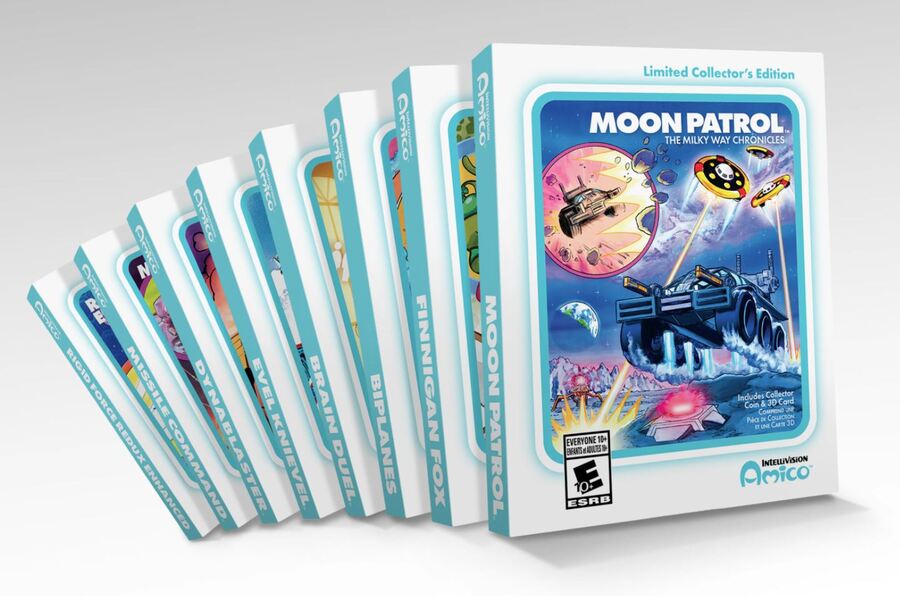
At present the role of in-game transactions with NFTs seems difficult, but what about digital game ownership? In recent years it’s become a notable topic as digital stores have closed down, such as the Wii Shop, and some game content has been ‘lost’ forever. While defunct stores do sometimes give us a means of accessing our old purchased content for redownload, the small print often emphasizes that this isn’t a permanent luxury. The reality is that when we buy a download game we’re effectively leasing it — theoretically it can disappear anytime.
If the game and its servers shut down, your NFT loses its purpose. It doesn’t appear to be a valid use of blockchain, or even one that’s particularly functional
The blockchain can’t really fix that for the reasons we’ve highlighted — our game content is controlled centrally by the platform holders / publishers, etc. However, one area that is open to change is what we do with our digital games while they’re active, and the form our ‘ownership’ takes. What, for example, if you could re-sell your download games when you’re finished with them?
Michael Yum points us to Robot Cache, which is “like Steam and GameStop in one”. It allows people to buy PC games and then, when they’re ready, sell them on. As you can see if you view the store, there are a number of publishers on board, and purchases and sales can be made with standard currencies like US dollars or the store’s own virtual currency, ‘IRON’. When you want to sell a game, it is listed for the same price you paid, but you get 25% of the money — 5% goes to the store, with the publisher then getting 70% of the resell. It functions rather like used game trade-ins with physical games, but in this case the publisher / developer gets a big chunk of money each time.
The games are stored on the blockchain to facilitate the functionality, and there’s a lot of sense to the approach, enough to tempt in some publishers and developers. Our sole criticism is the IRON virtual currency, which is not actually a cryptocurrency. Instead, users are encouraged to use a ‘mining pool’ tool on their PC that will work towards varied cryptocurrencies in the background, which then convert to ‘IRON’ in a user’s account. It’s a workaround that potentially dodges regulations but ultimately delivers a lot of the old trappings, encouraging users to ‘mine’ cryptocurrencies when not using their PCs for other things. Yep, that’s the mining that has been industrialised into farms and is heavily criticised on energy consumption / environmental grounds.
Elsewhere, the Intellivision Amico will utilise blockchain to enable people to share their digital games. It will have RFID (radio frequency identification) game cards that you ‘scan’ on the system to redeem a download — the goal is for the blockchain to combine with the scannable card to allow people to share and transfer ownership of games.
Michael Yum highlights this as ‘a fantastic idea’ but doesn’t expect major platform holders like Nintendo to adopt a similar approach. Ken Barnes highlights a good scenario for why companies like Nintendo would likely not follow a similar approach.
Platform holders would undoubtedly take a perpetual royalty from future sales – which is possible and can be entirely automated with an NFT – at a rate that would be far too high for most gamers to stomach. Only a very few people are going to accept selling a £50 game to a friend for £30 if they must split that cash 50/50 with Nintendo. On the flipside, any less than that sort of royalty and Nintendo would likely make more money from just providing regular discounts on their own store and selling the item direct.
Tim Dawson, meanwhile, sees the Amico approach as another example of blockchain technology being cited but achieving nothing that is significantly new .
Honestly it feels like buzzwords and marketing smoke. Instead of selling you games, Amico will sell you a RFID that will sync with a server somewhere and give your console permission to download the game. Somehow NFTs are involved. That just sounds like a traditional downloadable game model with NFTs shoehorned into it so they can attract media attention. Once you spot this pattern you can see it everywhere – the NFT serves almost no function, and would be worthless if the server that actually hosts the real content ever goes down.
I expect major companies to continue to test the waters with NFTs because investors like it or because they hope to make some short term gains but I hope companies like Nintendo ultimately decide to protect their dignity and their users.
Right now there is no indication of Nintendo, Sony or Microsoft shifting their digital game ownership models.
Erm, so what’s the summary here?
It’s important to separate the broader debate around blockchain technologies like NFTs and cryptocurrencies, and how these are used in games. What became clear to us in our interviews was that adopting these ideas into games is difficult and is yet to find a true purpose. We haven’t even touched upon games that exist solely to gamify cryptocurrency acquisition, which is hugely controversial but very much a PC-only concern at this point. Steam has notably banned games of that nature.
What became clear to us in our interviews was that adopting these ideas into games is difficult and is yet to find a true purpose
That rather applies across the board, too, with initiatives like Ubisoft’s being limited to PC, or game companies looking at simply selling artwork as NFTs through online marketplaces. The decentralised and unregulated nature of blockchain means that platform holders like Nintendo are currently staying away — quietly in the case of Nintendo, while Phil Spencer of Xbox has spoken out against some of the exploitative current trends.
Gaming companies are exploring the possibilities, however. We’ve seen SEGA express interest in the idea of NFT content then backpedal after a negative reaction, while Square Enix is eager to pursue opportunities in the space. Konami has already been selling NFT artworks in an auction to celebrate Castlevania’s 35th Anniversary; at the time of writing some were trading in ‘WETH’ at US dollar values well north of $1000.
GameStop is also planning to run an NFT marketplace and potentially accept specific cryptocurrencies, a goal its investors rather liked. There’s also talk of the ‘metaverse’ in gaming, in which major publishers and developers could theoretically team up and allow NFTs of in-game items to work across different titles, so your NFT of an in-game outfit could be worn in multiple games. It’s a theory, but of course could be some way off being a reality. Epic might be doing a good job of licensing every IP imaginable as purchasable Fortnite content, but the sheer technological hurdles and impracticality of making even a branded hat transfer seamlessly between multiple games is mindboggling, let alone the paperwork and finances involved once the IP lawyers are called in.
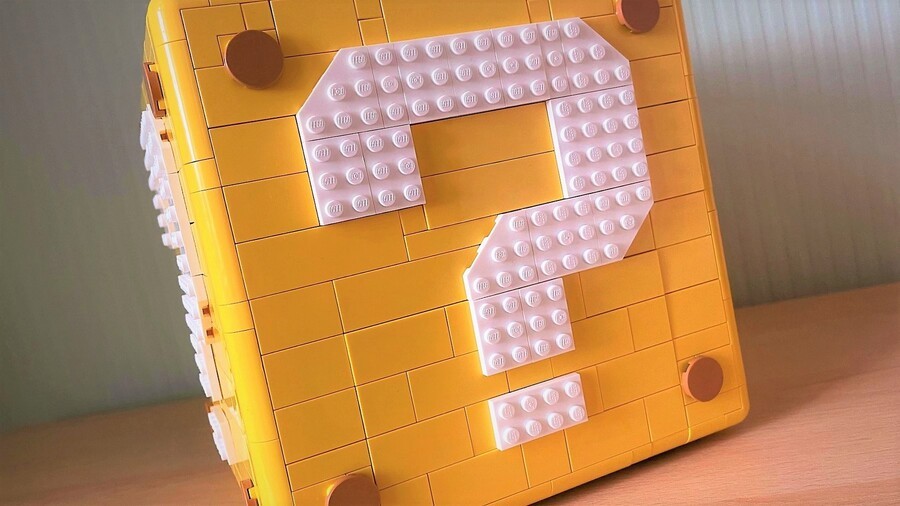
A broad problem that all three of our interviewees agreed upon is that the lack of regulation, which cuts to the heart of the broad concept, has led to the emergence of scams and abusive practices as individuals and companies try to cash in. Those issues, and the negative publicity they bring, have contributed to public hostility that can overlook any positives. As we’ve seen, there are notable practical issues of bringing blockchain into mainstream gaming, too. It’s an issue where every positive seems to have a matching negative, so finding the middle ground seems to be the only potential solution.
The big question, we think, is what can NFTs and related blockchain concepts bring to games that don’t already exist, or can’t be replicated with centralised approaches? We feel that’s not been entirely proven as yet — the idea of genuinely owning digital content is very attractive compared to the current flawed reality, but while our games and gaming services are from major platform holders that won’t happen. The strength and binding nature of ecosystems like Nintendo eShop mean that even disruptive technologies struggle to make a dent on the standard centralised model.
For those of us living the Nintendo Life, NFTs and all of the noise around them will likely still be an issue for other platforms in the coming years, but it’s certainly a space that will continue to evolve.
